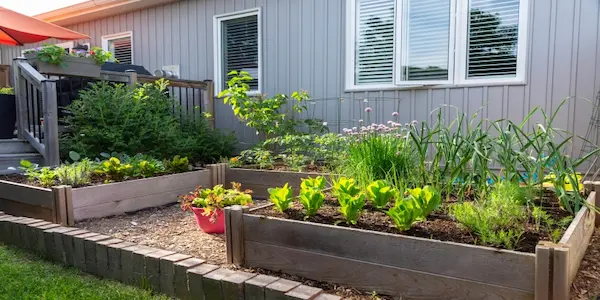Introduction
Selecting the right vegetable garden location is crucial for a successful and bountiful harvest. Many gardeners overlook this step, but the spot you choose affects sunlight exposure, soil quality, drainage, and plant health. This article guides you through the key factors to consider when deciding where to place your vegetable garden. We’ll cover everything from sunlight needs and soil testing to proximity and protection from pests, ensuring your garden thrives year-round.
Why Garden Location Matters
Choosing the optimal location impacts plant growth, yield, and garden maintenance. Vegetables generally require ample sunlight, good soil, and protection from harsh elements. A poor location can stunt growth or increase disease risks. Understanding how environmental factors influence your garden helps you make informed decisions that save time and effort later.
How Much Sunlight Does a Vegetable Garden Need?
Understanding Sunlight Requirements
Most vegetables need 6 to 8 hours of direct sunlight daily. Sunlight drives photosynthesis, essential for healthy growth and fruit production.
- Full sun: Ideal for tomatoes, peppers, and cucumbers.
- Partial shade: Suitable for leafy greens like spinach and lettuce.
Tips for Maximizing Sun Exposure
- Observe your yard’s sunlight patterns throughout the day and seasons.
- Avoid locations shaded by buildings, trees, or fences.
- Consider raised beds or containers if sunlight is limited.
Soil Quality and Drainage: Foundation of a Healthy Garden
Testing and Improving Soil
Healthy soil is rich in organic matter with a balanced pH (6.0 to 7.0 for most vegetables). Conduct a soil test to check nutrient levels and pH.
- Amend soil with compost or well-rotted manure to boost fertility.
- Avoid areas with compacted or rocky soil.
Importance of Drainage
Good drainage prevents waterlogging, which can cause root rot. Choose a site with slight slopes or raised beds to enhance water flow.
Proximity and Accessibility: Making Gardening Easier
Why Location Convenience Matters
Place your garden near a water source and your home to simplify watering and maintenance. Easy access encourages daily care, which improves plant health.
Planning for Expansion and Crop Rotation
Reserve space for future expansion and crop rotation to maintain soil health and reduce pest buildup.
Protecting Your Vegetable Garden Location
Shelter from Wind and Pests
Wind can damage plants and dry out soil. Use natural barriers like shrubs or fences to shield your garden.
- Install physical barriers like netting to deter pests.
- Consider companion planting to naturally repel insects.
Climate Considerations
Choose a location that offers some microclimate benefits, such as warmth or frost protection. South-facing slopes typically provide warmer conditions.
Conclusion
Choosing the right vegetable garden location sets the foundation for a thriving garden. Prioritize ample sunlight, nutrient-rich soil, good drainage, and ease of access. Protect your garden from wind and pests to maximize growth and yield. By carefully selecting your garden’s spot, you invest in successful harvests and a rewarding gardening experience. Start with a thoughtful location choice to enjoy fresh, homegrown vegetables season after season.
